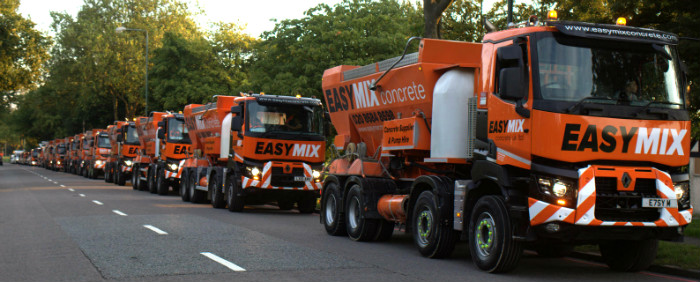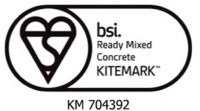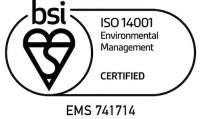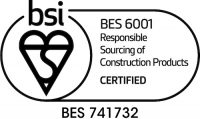The first thing to do is decide if you want volumetric or ready-mixed concrete. Here at EasyMix we always recommend volumetric concrete as it offers more benefits to customers, no matter whether you need a small amount for a DIY project or a large batch for a commercial development.
Volumetric concrete is mixed onsite in a specialist volumetric mixing vehicle, and is delivered immediately.

Why Choose Volumetric Concrete?
Getting the right quantity
Volumetric concrete is mixed on site, so if you discover you need more or less concrete when your operator arrives, they can mix exactly what you ask for. This means you save money as you don’t end up paying for concrete you don’t need, and if you need an extra load, you don’t have to place another order!
Getting the right type
Having an idea of the type of concrete you need when you call up to place your order is essential, but if on the day of delivery you need to alter the slump, grade or even include an extra admixture to suit changing conditions or requirements, your operative can provide that.
No mess
You might be tempted to mix your own concrete if you just have a small DIY project to complete, but the mess can be difficult to tidy up. Our mixer vehicles can deliver exactly the amount you need, even if it’s just a few square metres, and we always clean up after ourselves.
No waste
Volumetric concrete is much more cost-effective than ready mixed concrete. As we only mix up the exact amount you need, there is no leftover concrete – which means no part-load charges and no waste disposal charges for the excess!

Types of Volumetric Concrete
Next, you need to determine what type of concrete you need. As we’ve already explained, we can alter this when we arrive on site, but having a good idea of the concrete you want will ensure we have all the right ingredients (such as the right size aggregate and any admixtures you might need) when we arrive on site.
Do you want screed?
Screed is a thinner layer of concrete that is usually laid over a concrete base to create a level, smooth and hard-wearing final floor covering. It is usually of a higher quality than structural concrete so it uses finer aggregates. If you need to finish a concrete floor, then you need to order screed, not concrete.
Do you want concrete?
If you need concrete for any other project, such as building a base, foundations or walls, then you will need to choose a grade of concrete. The standard grades on offer range from C7/8 to C40 and each offers a different strength and suits different purposes.
The information supplied below is for guidance only, so if you are at all unsure what grade you need, we recommend consulting a builder or specialist.
- C7/8: Cavity filling, kerbing, domestic foundations & haunching.
- C10: Foundations for steps, trench fill, floor blinding & drainage works.
- C15: Foundations for small walls, sheds & conservatories. Paving for steps and paths.
- C20: Foundations for large walls, garages, houses & extensions. Paving for patios. Reinforced bases & oversites for conservatories, garages, sheds, greenhouses.
- C25: Foundations and reinforced bases for houses & extensions. Trench fill, kerbing & patios.
- C30: Paving external kennels and reinforced hard standings. Reinforced bases for workshops and unreinforced bases for houses & extensions.
- C35: Reinforced bases for commercial buildings and agricultural light storage areas.
- C40: Foundations for septic tanks, paving HGV parks and agricultural yards.
Do you want admixtures?
Depending on your application and requirements, you may benefit from adding additional qualities to your concrete to ensure it meets your requirements. These could include:
- Fibres for enhanced strength
- Plasticisers for more free-flowing concrete and better workability
- Retarding agents to reduce the rate of curing, allowing you longer to work with it
- Accelerating chemicals to increase the rate of curing (if your project is on a tight deadline)
- Corrosion inhibitors to reduce the corrosion of reinforced steel rebars within the concrete
Placing your order
- Use our concrete calculator to work out roughly how much concrete you need, and give us a call.
- Our team will discuss your project with you and get your order started.
- If you’re unsure about the type of concrete you need, have a look over over guide first or speak to a specialist.
- Pick a time and date for delivery that suits you (we offer 2 hour time slots so there’s no waiting around).
- Get prepared for your delivery!



